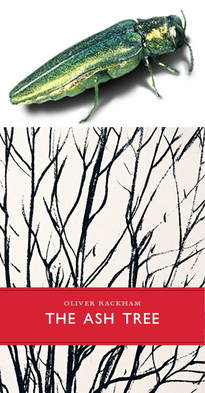
Central to the report was ash dieback disease (Chalara) and the potential for carbon fibre hurleys to replace the ash stick. It is something that has surfaced in the popular media regularly since 2012 (including on this blog, e.g. here). The reporter, John Burke, says that there are approximately 350,000 hurleys required annually and that the industry is worth €8m-€10m.
International trade and the importation of ash is briefly discussed in the report, e.g. the importation of ash planks for hurley making. A broader discussion is needed. Some believe that it was the importation of ash plants (rather than planks) that brought the disease to Ireland. However, as an airborne disease, it is possible that the disease arrived by a more "natural" route. The international trade in ash plants is one source of danger (which has since been addressed to a large degree). However, there is a bigger threat and one that is not commonly understood. It is international trade of almost any sort.
One of the books I read this summer was The Ash Tree by Oliver Rackham. It filled me with a mixture of pessimism and optimism for the future of the ash tree. The optimism comes from his discussion of the ways that trees react to disease. The discussion of the devastation of the (Dutch) Elm Disease is worth reading. Rackham says it is too early to tell exactly the implications of the ash dieback disease but he leaves room for hope. Yet, there is a sense of foreboding when he discusses the Emerald Ash Borer. The beetle is described as one of the most feared on the planet. The beetle has not yet made its way to Great Britain and the island of Ireland. But it sounds like it is only a matter of time. When this happens, someone will be asked to write another book about the ash tree - just as Rackham was asked to write The Ash Tree when the ash dieback disease was first noticed in Britain in 2012. To paraphrase Rackham, it seems the stable door can only be bolted when the plant pathologists have certified that the horse has gone.
Unfortunately, the authorities seem to be blind to the risk. According to Rackham, the UK Department of Environment, Food and Rural Affairs "produced 34 pages of verbiage on Chalara, the No.2 threat to ash trees that has got here and is uncontrollable, without one mention of Emerald Ash Borer, the No.1 threat, that could yet be kept out" (p.163). He is unsurprised. He points out that, at a conference in Ireland during 2004, he suggested that the Irish could do something to prevent the arrival of ash dieback but the "man from the Ministry got up and bleated that nothing could be done because this would restrict trade and the World Trade Organisation would not allow it" (p.162).
Despite Rackham's hope that Emerald Ash Borer can "be kept out", it seems that its arrival on our shores is probably an accident waiting to happen. It is believed that the beetle made its way to the US in a consignment of car parts. The impact has been devastating. It was almost impossible to see that happening and it is almost as difficult to prevent. But, it seems it is a price we are destined to pay for the benefits of international trade.
 RSS Feed
RSS Feed